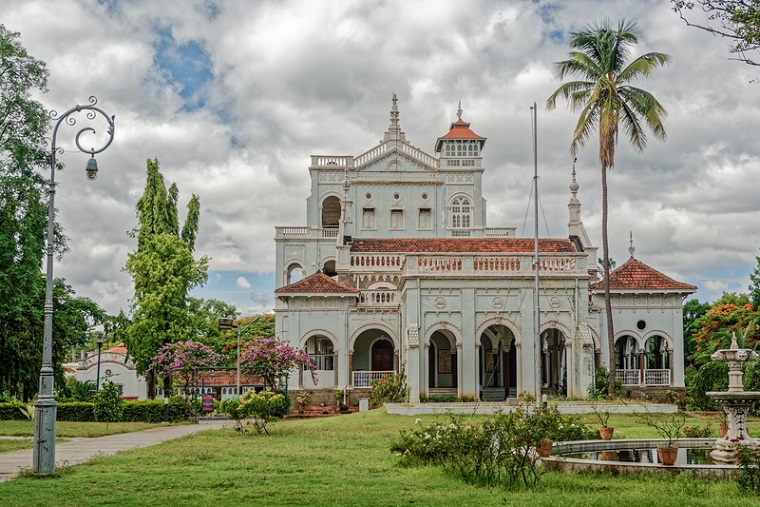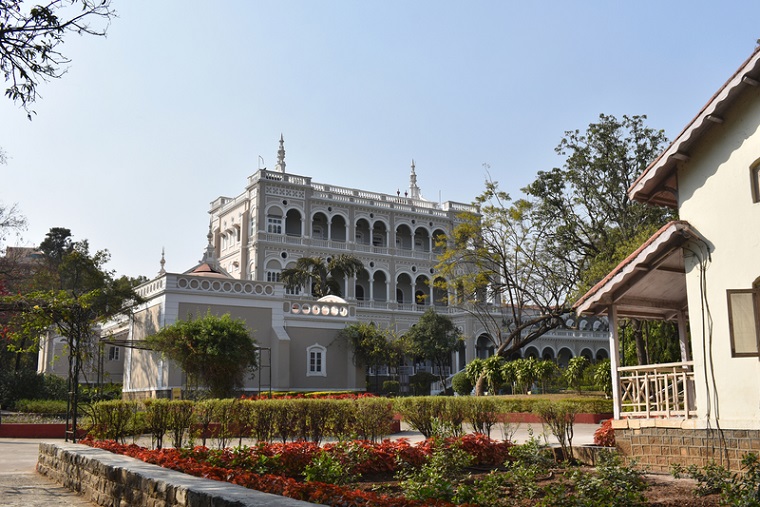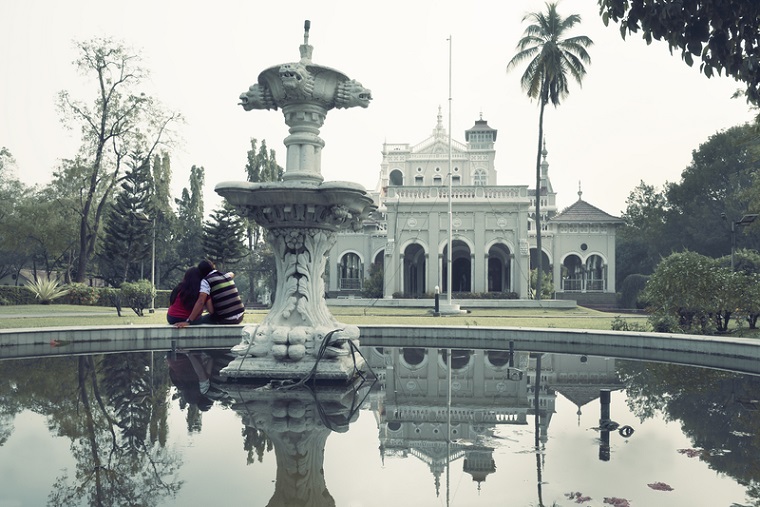
The Aga Khan Palace is a beautiful architectural masterpiece in Pune, Maharashtra, India. Built in the early 20th century, this palace has become an essential landmark in the city of Pune, attracting tourists worldwide. It is around 200 km from Mumbai.
In this article, we will explore the history and significance of the Aga Khan Palace.
History
The Aga Khan Palace was built in 1892 by Sultan Muhammed Shah Aga Khan III, the 48th Imam of the Ismaili community. The palace was created as a symbol of charity to help the local people who were suffering from famine at the time. The court was designed by a British architect named Charles Correa.
In 1942, the British authorities arrested Mahatma Gandhi, his wife Kasturba Gandhi, and his secretary Mahadev Desai and imprisoned them in the Aga Khan Palace for over two years. During their imprisonment, Kasturba Gandhi and Mahadev Desai passed away, making the palace a place of significant historical importance in the Indian Independence movement.
Architecture
The Aga Khan Palace is a beautiful example of colonial architecture blending Italian and Mughal styles. The palace covers an area of about 19 acres and has a total of 5 halls. The court is made of pink and cream-colored stones and has beautiful arches and columns that give it a majestic look.
One of the main attractions of the palace is the spacious gardens that surround it. The gardens are adorned with fountains, trees, and flowers, providing a serene and tranquil environment for relaxation and reflection.

Significance
The Aga Khan Palace has an important place in the history of India’s freedom struggle. During the Quit India Movement, Mahatma Gandhi, his wife Kasturba Gandhi, and his secretary Mahadev Desai were imprisoned in the palace. The castle became an important center for the Indian independence movement, and many leaders were imprisoned there.
The palace also houses the samadhis of Kasturba Gandhi and Mahadev Desai, which are located in a small room. The room also has some personal belongings of Mahatma Gandhi, including his spinning wheel and a few other things. This room is open to the public and essential to the palace’s visitors.
The palace also has a museum that showcases the life and achievements of Mahatma Gandhi. The museum has many photographs, documents, and personal belongings of Mahatma Gandhi. It is a great place to learn about the life and times of one of India’s most outstanding leaders.
Tourism
The Aga Khan Palace is a popular tourist attraction in Pune, attracting thousands of tourists yearly. The palace is open to the public from 9:00 am to 5:30 pm daily, except on national holidays. The palace charges a nominal entry fee, and visitors can explore the palace’s 5 halls, gardens, and museum.
Visitors can also attend the daily prayer meetings held at the samadhis of Kasturba Gandhi and Mahadev Desai. The meetings are held every morning and evening and are a great way to pay homage to these great souls.

How to Reach Aga Khan Palace
The Aga Khan Palace is located in Pune, Maharashtra, India. Here are some ways to reach the palace:
By Air: The nearest airport to the Aga Khan Palace is the Pune International Airport, which is about 7 km away from the palace. You can take a taxi or a pre-paid cab from the airport to the palace.
By Train: Pune has a well-connected railway network, and the Pune Junction Railway Station is the main railway station in the city. The station is about 10 km away from the palace. You can take a taxi or a local bus from the railway station to the palace.
By Bus: Pune has an extensive bus network, and the Maharashtra State Road Transport Corporation (MSRTC) operates many buses that connect Pune with other cities in Maharashtra and neighboring states. You can take a bus from the Pune Bus Stand to reach the palace.
By Cab: Taxis and pre-paid cabs are readily available in Pune, and you can hire one to reach the palace. You can book a taxi online or use ride-hailing apps like Uber and Ola to book a cab.
Local Transport: Once you reach the palace, you can use local transport like auto-rickshaws and taxis to explore the city. Pune also has a well-connected public transport network that includes buses and local trains. You can use these to travel within the city.
Entry Fee, Ticket Cost
The Aga Khan Palace in Pune, Maharashtra, India, charges a nominal entry fee for visitors. The ticket cost for visiting the palace is as follows:
For Indian Citizens:
- Adults: Rs. 25 per person
- Children (aged between 5 and 12 years): Rs. 5 per person
For Foreign Nationals:
- Adults: Rs. 300 per person
- Children (aged between 5 and 12 years): Rs. 100 per person
There are also separate charges for photography and videography inside the palace premises. Photography is allowed inside the palace, but visitors need to pay an additional fee for the same. The photography charges are as follows:
- Still Camera: Rs. 50 per camera
- Video Camera: Rs. 200 per camera
The above ticket and photography charges are subject to change, and visitors are advised to confirm the latest fees before planning their visit to the Aga Khan Palace.
The palace also offers group discounts for students and organized groups. For more information on group discounts, visitors can contact the palace management.

Opening and Closing Time, Holidays
The Aga Khan Palace in Pune, Maharashtra, India, is open for visitors on all days of the week, including weekends and public holidays. The palace has fixed entry and closing times, and visitors are advised to plan their visit accordingly.
Here are the details of the opening and closing times of the Aga Khan Palace:
- The palace opens at 9:00 am in the morning and closes at 5:30 pm in the evening.
- The last entry for visitors is at 5:00 pm.
- The palace remains closed on three national holidays: Republic Day (26th January), Independence Day (15th August), and Gandhi Jayanti (2nd October).
Visitors are advised to arrive early in the morning to avoid long queues and to make the most of their visit. The palace can get crowded during weekends and public holidays, so visitors should plan their visit accordingly.
In addition to the above timings, the palace hosts various events and exhibitions annually. Visitors can check the palace’s official website or contact the palace management to know more about the events and timings.
The Aga Khan Palace has fixed entry and closing times, and visitors should plan their visit accordingly. The palace remains closed on three national holidays, and visitors should avoid visiting during peak hours to avoid crowds. The palace hosts various events and exhibitions throughout the year, and visitors can check the official website for more information.
Address, Phone, and other Contact details
Here are the contact details of the Aga Khan Palace in Pune, Maharashtra, India:
Address: Aga Khan Palace Road, Nagar Road, Kalyani Nagar, Pune, Maharashtra 411006, India
Phone Number: +91-20-2668-0230
The Aga Khan Palace management can be contacted by phone or email or visiting the palace’s official website. The website provides information on the palace’s history, architecture, events, and exhibitions. Visitors can also book their tickets online through the website and get information on the latest ticket charges and timings.
In addition to the above contact details, the palace management can be reached through social media platforms like Facebook, Instagram, and Twitter. Visitors can follow the palace’s official accounts to get updates on the latest events, exhibitions, and other activities happening at the palace.
Other Places to Visit Near Aga Khan Palace
Pune, Maharashtra’s cultural capital, is around 200 Km from Mumbai. It is a city steeped in history and has much to offer tourists. Besides the Aga Khan Palace, visitors can explore many other places of interest in and around Pune. Here are some of the popular tourist destinations near the Aga Khan Palace:
- Shaniwar Wada: Located in the heart of Pune city, Shaniwar Wada is a historical fortification built in the 18th century. It was the seat of the Peshwas of the Maratha Empire until its destruction in a fire in 1828.
- Osho Ashram: The Osho Ashram is a spiritual center in Koregaon Park, Pune. It was founded by the spiritual guru Osho Rajneesh and attracts visitors from all over the world who come to learn and practice meditation and yoga.
- Saras Baug: Saras Baug is a popular park in the heart of Pune city. It has a beautiful temple dedicated to Lord Ganesha and a large artificial lake where visitors can go boating.
- Raja Dinkar Kelkar Museum: The Raja Dinkar Kelkar Museum is a unique museum that showcases the personal collection of artifacts and antiques of Dr. Dinkar Kelkar, a renowned art collector.
- Parvati Hill: Parvati Hill is a popular tourist destination in the heart of Pune city. It has a temple dedicated to the Hindu goddess Parvati and offers panoramic city views.
- Lal Mahal: Lal Mahal is a historical palace built by Shivaji Maharaj’s father, Shahaji Bhosale. It was the residence of Shivaji Maharaj and his mother, Jijabai, and has been converted into a museum showcasing the life and times of Shivaji Maharaj.
- Sinhagad Fort: Sinhagad Fort is a hill fort located on the outskirts of Pune. It was the site of many battles fought by Shivaji Maharaj and is a popular trekking destination for adventure enthusiasts.
In conclusion, there are many other places to visit near the Aga Khan Palace in Pune, Maharashtra. Visitors can explore the city’s rich history and culture by visiting these famous tourist destinations.
Conclusion
The Aga Khan Palace is a historical gem in Pune and a gateway to Maharashtra’s rich culture. Visitors can explore the palace’s rich history and architecture and visit the various tourist destinations and local markets in Pune to experience the state’s vibrant art, culture, and heritage. The palace’s events and exhibitions also provide a unique opportunity to experience the state’s culture and should not be missed.
Leave a Reply